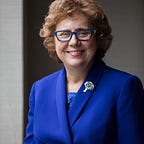I Want to Start a Movement: Live Courageously
The other week, I went to a one-hour lecture on living courageously. While that was not the name the speaker used to describe his talk; those were words that resonated with me the most as I left his lecture. Plus, it complemented this blog series on ‘the courage we need.’ As we dive back into the series, I want to share with you more about the lecture; and how it took on the perspective of a true story where courage was definitely needed.
The speaker was called in to be a consultant for a major manufacturing company, where an employee had recently died in the plant. The speaker knew he was walking into trouble, but also knew that he had to start somewhere. This company had a bad track record of accidents; and in spite of a huge investment (millions of dollars) into safety tactics, precautions, and equipment — they were among the worst performers in their industry. The CEO even admitted that he was going to brief the board that they were budgeting for six employee deaths over the next year!
At this point in the story I was stunned; as was the rest of the audience. Who budgets for horrible outcomes? Who expects that people will need to die for their company to succeed? The consultant offering the lecture shared that the remaining conversations with this particular company were challenging; and the CEO argued that they had done all they could to prevent such morbid outcomes.
“Accidents,” he said, “would happen;” but the consultant countered that by explaining — if they expected accidents, they would get them. After some conversation, the CEO decided to take a stand; “there would never be an injury in the plant again,” he announced to a quiet audience of executives. Someone had the courage to disagree, and tell the CEO that-that is impossible; that accidents would still happen.
This led to new questions, new challenges, and a new sense of imagination for everyone involved at this company. Were they really spending their money wisely? Did they really have the full support of staff to design their safety practices? Are they really sure they didn’t miss some big opportunity? Could it be that the deaths and terrible injuries could truly be avoided? A goal was set to get to zero injuries/deaths; and a few years later they were happy to report that they moved from 611 injuries per year down to 50, but they were still aiming for zero.
So what can a story like this mean to us at KenCrest — as a human services provider? It seems to me that we have our own set of assumptions. We have our own list of things that we think won’t change, and aren’t possible. We believe we are too busy and we have too much on our plates. We don’t have all that we need to make the changes we really think would be meaningful, impactful, and outright fantastic; and while we are open to admitting that, we have also accepted this as our fate.
In my next series of blogs we’ll explore our greatest challenges, and look at them with a different perspective. The initial theme will be “a day in the life of…” the first one being one of KenCrest’s residents who attends one of our day programs. Prepare to see differently!
